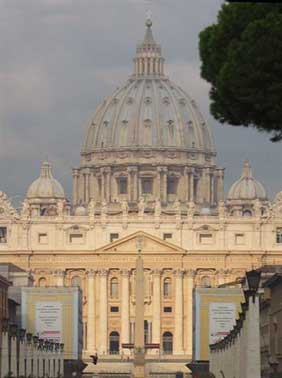 |
In
the Middle Ages, all the pilgrims (mainly german or saxon) who
reached Rome at the end of the route “Via Francigena”
faced the fortified walls of the Vatican. Around them, there was
a district with small houses and guest houses for pilgrims that
they called “Burg” that is “Small town”:
that is where the district takes its name. Already at the time
of ancient Rome, Emperor Caligula got to build a circus, a theatre
for shows and also martyrdom of many Christians. Of particular
relevance among these Christians, there was the apostle Peter
who was buried in the necropolis along the route “Via Clodia”,
just on the side of the circus. In the 4th century, Emperor Costantino
got to build a big Basilica upon Peter’s grave which had
already become a pilgrimage site. The Basilica dedicated to the
Saint acquired over the centuries a very high symbolic and political
value. |